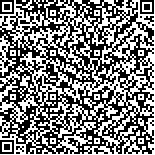|
|
| |
|
|
| 本文已被:浏览 1676次 下载 2047次 |

码上扫一扫! |
|
|
| 通脉养心丸干预冠心病稳定性心绞痛气阴两虚证的临床生化基础研究 |
|
徐一兰1, 高杉1, 邓兵2, 毛美娇2, 杜廷海3, 李彬3, 杨宝平4, 于研4, 张虹5, 张世姝5, 毛静远6, 王贤良6, 徐强7, 张蕾8, 宋光明8, 田莉8, 王丽9, 闫丹丹1, 李琳1, 高树明1, 潘晔1, 蔡雪朦1, 王朔1, 李晓枫1, 艾乐10, 胡镜清11, 边育红1, 于春泉1
|
|
1.天津中医药大学, 天津 301617;2.上海中医药大学附属龙华医院, 上海 200032;3.河南中医药大学第一附属医院, 郑州 136300;4.甘肃省中医院, 兰州 730699;5.天津市南开医院, 天津 300100;6.天津中医药大学第一附属医院, 天津 300193;7.天津中医药大学第二附属医院, 天津 300150;8.天津市武清区中医医院, 天津 301700;9.天津市第二人民医院, 天津 300192;10.天津中新药业集团股份有限公司乐仁堂制药厂, 天津 300112;11.中国中医科学院中医基础理论研究所, 北京 100700
|
|
| 摘要: |
| [目的]通过多中心、精细化的临床研究,旨在对比通脉养心丸干预的冠心病稳定性心绞痛气阴两虚证患者和健康人的临床生化指标,探讨其临床生化基础。[方法]从全国7家临床研究中心共入组受试者82例,其中脱失3例,最终纳入冠心病气阴两虚证患者39例,在西医常规治疗的基础上加服中药通脉养心丸治疗,健康人40例不予干预。分别检测内皮细胞损伤、脂质代谢、黏附分子、炎症介质、金属蛋白酶、同型半胱氨酸和凝血功能共7类28项指标,冠心病患者分别检测0、8、12周水平,健康人检测第0周水平。[结果]冠心病气阴两虚证与载脂蛋白B、低密度脂蛋白、血管紧张素Ⅱ相关性较大,经过通脉养心丸的治疗,血管紧张素Ⅰ、血浆内皮素升高,可溶性CD40配体水平下降(P<0.05)。整体炎症因子水平有下降趋势。[结论]通脉养心丸调控冠心病稳定性心绞痛气阴两虚证的生化基础与内皮损伤、脂质代谢、炎症因子有关,可为进一步研究提供参考依据。 |
| 关键词: 冠心病稳定性心绞痛 气阴两虚证 临床生化 多中心 精细化 |
| DOI:10.11656/j.issn.1672-1519.2019.01.06 |
| 分类号:R541.4 |
| 基金项目:国家重点基础研究发展计划(973计划)项目(2014CB542902)。 |
|
| Clinical and biochemical basic research of the qi and yin deficiency syndrome of coronary heart disease stable angina |
|
XU Yilan1, GAO Shan1, DENG Bing2, MAO Meijiao2, DU Tinghai3, LI Bin3, YANG Baoping4, YU Yan4, ZHANG Hong5, ZHANG Shishu5, MAO Jingyuan6, WANG Xianliang6, XU Qiang7, ZHANG Lei8, SONG Guangming8, TIAN Li8, WANG Li9, YAN Dandan1, LI Lin1, GAO Shuming1, PAN Ye1, CAI Xuemeng1, WANG Shuo1, LI Xiaofeng1, AI Le10, HU Jingqing11, BIAN Yuhong1, YU Chunquan1
|
|
1.Tianjin University of Traditional Chinese Medicine, Tianjin 301617;2.Longhua Hospital Affiliated to Shanghai University of Traditional Chinese Medicine, Shanghai 200032, China;3.The First Affiliated Hospital of Henan University of Traditional Chinese Medicine, Zhengzhou 136300, China;4.Gansu Provincial Hospital of Traditional Chinese Medicine, Lanzhou 730699, China;5.Tianjin Nankai Hospital, Tianjin 300100, China;6.The First Teaching Hospital of Tianjin University of Traditional Chinese Medicine, Tianjin 300193, China;7.The Second Affiliated Hospital of Tianjin University of Traditional Chinese Medicine, Tianjin 300150, China;8.Tianjin Wuqing Hospital of Traditional Chinese Medicine, Tianjin 301700, China;9.Tianjin Second People Hospital, Tianjin 300192, China;10.Tianjin Zhongxin Pharmaceutical Group Limited by Share Ltd. Lerentang Pharmaceutical Factory, Tianjin 300112, China;11.Institue of Basic Theory of Traditional Chinese Medicine, China Academy of Chinese Medicine Science, Beijing 100070, China
|
| Abstract: |
| [Objective] To explore the qi and yin deficiency syndrome of coronary heart disease by clinical biochemical basis through comparing the strict screening of coronary heart disease stable angina pectoris by clinical and biochemical indexes of patients and healthy people with the multicenter, small sample and fineness clinical research.[Methods] From the seven clinical research centers, 82 cases were selected to the observation. With 3 cases deletion, 79 cases were eventually into the subjects, including 39 cases of qi and yin deficiency syndrome, which were treated with traditional Chinese medicine on the basis of the routine treatment of Western medicine, and 40 healthy people were not involved in the treatment. Endothelial cell injury was detected, lipid metabolism, adhesion molecules and inflammatory mediators, metalloproteinases, homocysteine and blood coagulation function 7 class 28 indicators, were detected in patients with coronary heart disease (CHD) level 0, 8, 12 weeks, healthy people group testing at 0 week.[Results] The correlation between qi and yin deficiency syndrome of CHD and ApoB, LDL-C, AngⅡ was larger. After treatment of Tongmai Yangxin Pills, the level of AngⅠ, ET and sCD40L level were decreased (P<0.05). Overall levels of inflammatory cytokines tended to decrease.[Conclusion] The biochemical basis of Tongmai Yangxin Pills for the regulation of stable angina pectoris with CHD qi and yin deficiency syndrome is related to endothelial injury, lipid metabolism and inflammatory factors, which can provide reference for the next study. |
| Key words: coronary heart disease stable angina pectoris qi and yin deficiency syndrome clinical biochemistry multi-centers finesse |
|
|
|
|
